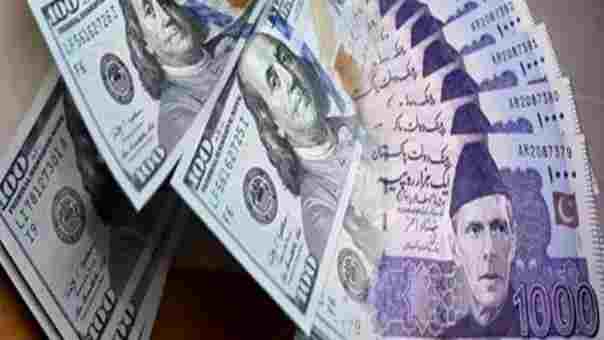Karachi, July 9, 2025 – The Pakistani rupee extended its losing streak for the fourth consecutive session on Wednesday, continuing to slide against the US dollar in the interbank foreign exchange market.
The rupee depreciated by 11 paisas to close at PKR 287.47 per dollar, compared to the previous session’s closing of PKR 287.36.
This sustained downtrend began on July 3, when the rupee was trading at PKR 283.86. Since then, the domestic currency has been under mounting pressure, primarily driven by a sharp increase in dollar demand. Currency dealers and analysts attribute the ongoing depreciation to a surge in foreign payments, especially by importers and multinational corporations.
With the start of fiscal year 2025–26, importers who had delayed purchases due to budget uncertainties in June have resumed transactions aggressively. This rebound in import activity has fueled a spike in dollar demand, exerting downward pressure on the rupee. Simultaneously, multinational firms have increased dollar purchases to repatriate profits and dividends, further straining the foreign exchange market.
Forex analysts note that the current slide, while notable, is part of a common pattern observed at the beginning of each fiscal year. “The rupee’s depreciation is more of a session-based adjustment than a reflection of long-term macroeconomic distress,” said a senior market expert. He added that confidence is likely to return once initial payment backlogs are cleared.
Encouragingly, Pakistan’s macroeconomic fundamentals show signs of resilience. The Pakistan Bureau of Statistics (PBS) recently reported a 9.47% reduction in the trade deficit for June 2025, indicating reduced pressure on external accounts. This narrowing is largely due to a drop in both imports and exports.
Adding to the positive sentiment, the State Bank of Pakistan (SBP) reported a significant jump in foreign exchange reserves, reaching $14.51 billion at the end of fiscal year 2024–25—up by $5.12 billion from a year earlier. The improved reserve position reflects successful external financing efforts and fiscal discipline.
Though the rupee may experience further volatility in the short term, analysts expect a return to stability in the coming sessions, particularly as dollar demand subsides and reserve strength continues to act as a stabilizing force.
